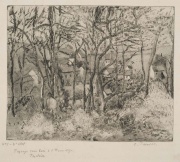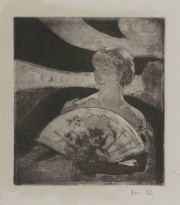Difference between revisions of "Soft ground etching"
Jump to navigation
Jump to search
(username removed) |
m (Text replace - "== Authority ==" to "== Sources Checked for Data in Record ==") |
||
| Line 20: | Line 20: | ||
| − | == | + | == Sources Checked for Data in Record == |
* ''Encyclopedia Britannica'', http://www.britannica.com Comment: "printmaking." Encyclopædia Britannica. 2005. Encyclopædia Britannica Premium Service 3 Feb. 2005 . | * ''Encyclopedia Britannica'', http://www.britannica.com Comment: "printmaking." Encyclopædia Britannica. 2005. Encyclopædia Britannica Premium Service 3 Feb. 2005 . | ||
Revision as of 18:40, 1 May 2016
Description
An etching prepared from a plate that is covered with a thin, soft, tacky material. Soft ground etching was used since the late 18th century to produce offset drawings with very fine textures. For the technique, a printing plate is spread with the soft ground (often containing resin, wax, and/or grease), then covered with a drawing paper. As the artist draws the image, the pressure causes the tacky ground to adhere to the paper and thus expose the metal plate. Once the paper is removed, the plate is etched with a weak acid.
Synonyms and Related Terms
soft-ground etching; Weichgrundradierung (Deut.)
Additional Images
Sources Checked for Data in Record
- Encyclopedia Britannica, http://www.britannica.com Comment: "printmaking." Encyclopædia Britannica. 2005. Encyclopædia Britannica Premium Service 3 Feb. 2005 .
- Luis Nadeau, Encyclopedia of Printing, Photographic, and Photomechanical Processes, Atelier, New Brunswick, 1997
- The Bullfinch Guide to Art History, Shearer West (ed.), Bullfinch Press, Boston, 1996
- B. Gascoigne, How to Identify Prints, Thames & Hudson, London, 2004






